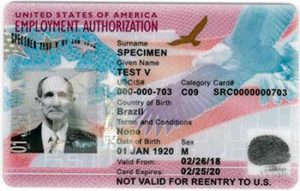asylum clock
The term asylum clock exists to help determine eligibility for employment authorization through a pending case of asylum. To be eligible to file for employment authorization, the applicant must have at least 150 days on asylum clock.
The clock starts when the applicant files application for asylum, form I-589
Contents
Filing an affirmative application for asylum with USCIS starts the clock.
The clock stops if you do not appear for the scheduled interview. Other than failure to appear, there are other scenarios when the clock stops. For example, appearing at the interview late or without an interpreter will stop the clock. Submitting additional documents right before the asylum interview may stop the clock and interview may get rescheduled.
Asylum clock can restart and continue running if one fulfills certain conditions. For example, if the applicant appears at the rescheduled interview, the clock will restart and continue to run. The clock continues to run even if the case gets referred to court.
asylum clock in immigration court
In immigration court there are multiple scenarios when the clock can stop. If the applicant failed to show up at his asylum interview at the asylum office, his clock is permanently stopped. It will not be easy to get the clock running again.
Any time respondent causes delay in court, the clock stops. When respondent in court requests time to find attorney, his clock stops until the next master. At the end of a master hearing immigration judge dictates a closing code. These closing codes are used to determine if the delay is attributable to respondent or to the government.
Immigration judge does not have control over asylum clock
Respondents cannot address the immigration judge with request to restart the clock. Court administrators are the ones who can help in such cases. How to address the court administrator depends on the immigration court. In some courts there is an e-mail address specifically for the clock related inquiries. In other courts they require to send a letter by regular mail. Immigration attorney can help fix the clock or at least determine what has gone wrong.
In some cases it is impossible to fix the clock
 The government has 180 days to complete a case of asylum. The clock starts on the day when the government receives completed I-589. The clock stops when the immigration judge orders removal. If respondent’s final individual hearing happens before he reached 180 days on the clock, there will be no eligibility for work permit during appeal with BIA.
The government has 180 days to complete a case of asylum. The clock starts on the day when the government receives completed I-589. The clock stops when the immigration judge orders removal. If respondent’s final individual hearing happens before he reached 180 days on the clock, there will be no eligibility for work permit during appeal with BIA.
We had a client who had accumulated 179 days on the asylum clock before the individual hearing. Immigration judge denied her asylum. She timely filed her appeal with the Board of Immigration Appeals within 30 days. The case was on appeal with BIA for several years. Unfortunately, there was nothing that we could do to get her employment authorization.
Some judges are not able to set an individual hearing within 180 days as required by law. They set the case for an individual hearing at the end of their calendars. This can be several years from the master calendar hearing. In such cases the clock will continue to run until the individual hearing. Respondent will qualify to file for a work permit.
150 or 180 days?
Generally speaking, 180 days are required on the clock to be eligible for a work permit. However, applicants can file 30 days earlier. This is where the 150 days appear. In some rare cases where respondent has more than 150 days but fewer than 180 days and the clock stops, respondent will not get an employment authorization. In these cases he will need to wait until the clock continues to run.
Verify asylum clock by phone at 1-800-898-7180
It is easy to find out how many days you have on the clock by calling immigration court automated system. The phone number of the automated system is 1-800-898-7180. Press 1 to continue in English. Next, key in your A number. Then press one, one, and two to get the clock information.
Remember that the clock in immigration may not accurately reflect the clock that started at the asylum office before referral. Referral notice is a good indicator, although not always very accurate, of how many days you have on the clock.
Mistakes in adjudication are common
We have seen many cases where USCIS denies employment authorization when the applicant is eligible. One thing to remember is that applicant can refile his form I-765 for work permit. The job of immigration attorney is to adequately explain to USCIS why the applicant is eligible. Appeals are time consuming and costly. Refiling may be free if this is applicant’s first employment authorization. If you received a denial of employment authorization, contact an immigration attorney for help.
